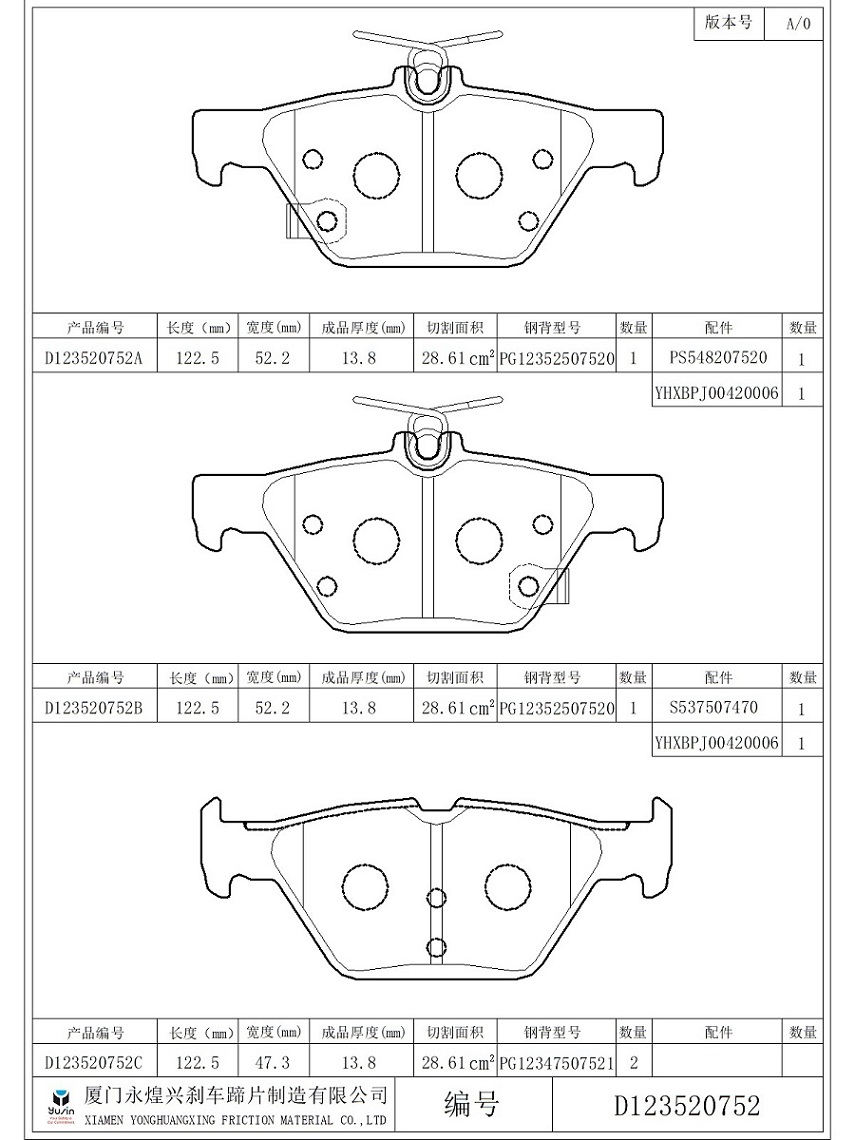Unveiling the Science Behind Braking: How Brake Pad Material Impacts Performance
2024-02-28
When it comes to vehicle safety, few components are as crucial as the brake pads. These seemingly small parts play a pivotal role in converting kinetic energy into thermal energy, ultimately bringing your vehicle to a safe stop. However, not all brake pads are created equal. The material composition of brake pads significantly influences their performance characteristics, affecting everything from braking efficiency to noise levels. In this blog post, we'll explore the intricate relationship between brake pad material and braking performance, shedding light on why choosing the right type of brake pads is essential for safe and reliable driving experiences.
Understanding Brake Pad Material
Brake pads are typically composed of a blend of materials carefully selected to provide optimal friction, durability, and heat resistance. The most common types of brake pad materials include:
1. Organic Brake Pads: Made from a mixture of organic compounds such as rubber, carbon, and kevlar, organic brake pads offer smooth and quiet braking performance. They generate less dust and are gentle on brake rotors, making them ideal for everyday driving conditions.
2. Semi-Metallic Brake Pads: Semi-metallic brake pads contain a combination of metal fibers, typically steel, and organic materials. These pads offer improved braking performance and heat dissipation compared to organic pads, making them suitable for towing, hauling, or spirited driving.
3. Ceramic Brake Pads: Ceramic brake pads feature a formulation of ceramic fibers, non-ferrous filler materials, and bonding agents. Known for their durability and heat resistance, ceramic pads provide excellent braking performance, low noise levels, and reduced brake dust. They are often preferred for high-performance vehicles and luxury cars.
Impact on Braking Performance
The material composition of brake pads directly influences their performance characteristics, including:
1. Braking Efficiency: Different brake pad materials offer varying levels of braking efficiency. Ceramic brake pads, for example, provide excellent stopping power and consistent performance across a wide range of temperatures. They offer smooth and linear braking, making them ideal for everyday driving and high-performance applications.
2. Heat Resistance: High-quality brake pads are designed to withstand extreme temperatures generated during braking without experiencing brake fade. Ceramic brake pads excel in heat resistance, making them less prone to brake fade and ensuring consistent braking performance even under demanding conditions.
3. Noise and Vibration: The composition of brake pad material can affect noise and vibration levels during braking. Ceramic brake pads are known for their quiet operation, while semi-metallic pads may produce more noise under certain conditions. Organic brake pads typically offer the quietest operation but may wear faster under heavy use.
Considerations for Choosing Brake Pads
When selecting brake pads for your vehicle, it's essential to consider factors such as driving style, vehicle type, and environmental conditions. Factors to consider include:
- Driving Style: Do you engage in spirited driving, towing, or hauling?
- Vehicle Type: Different types of vehicles may benefit from specific brake pad formulations.
- Environmental Conditions: Consider the climate and road conditions in your area.
Conclusion: The Right Choice for Safe Braking
In conclusion, the material composition of brake pads plays a critical role in determining their performance characteristics and overall braking efficiency. Whether you prioritize smooth and quiet braking, high-performance stopping power, or durability under extreme conditions, there's a brake pad material designed to meet your needs. By understanding the impact of brake pad material on braking performance and considering factors such as driving style and vehicle type, you can make an informed decision and choose the right type of brake pads to ensure safe and reliable braking performance for your vehicle. Remember, when it comes to vehicle safety, every component matters—selecting the right brake pads is essential for safe and enjoyable driving experiences.



